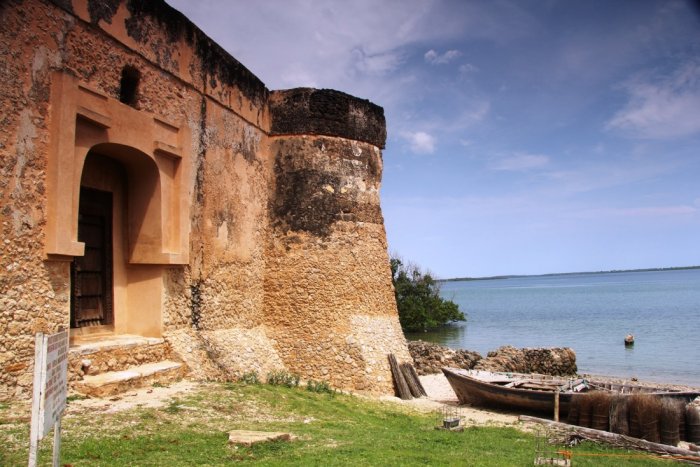MessageToEagle.com – In ancient times, Kilwa Kisiwani and Songo Mnarawere were two great African ports located on two islands close to each other just off the Tanzanian coast about 300km south of Dar es Salaam.
From the 13th to the 16th century, the merchants of Kilwa dealt in gold, silver, pearls, perfumes, Arabian crockery, Persian earthenware and Chinese porcelain.
Historical documents such as the Kilwa Chronicle report that the city began to thrive under the founding Shirazi dynasty of sultans.
The Kilwa Chronicle is the name of a collected genealogy of the sultans who ruled the Swahili culture from Kilwa. Two texts, one in Arabic and one in Portuguese, were written in the early 1500s, and together they provide a glimpse into the history of the Swahili coast, with particular emphasis on that of Kilwa Kisiwani and its sultans of the Shirazi dynasty.

According to local historians, the island was settled in the 11th century by Ali bin Al-Hasan of Persia, who ruled over the island for 40 years. The dynasty he founded was credited with having established Kilwa as a significant trade centre. Over the next two centuries, various successors ruled and were overthrown, but they built impressive coral-stone houses and lavish mosques – the remains of which can still be seen today.
In 1331-1332, the great traveler, Ibn Battouta made a stop here and described Kilwa as one of the most beautiful cities of the world.
The prosperity of the port city remained intact until the last decades of the 14th century, when turmoil over the ravages of the Black Death took its toll on international trade.
In 1505, the Portuguese took over the coastline and assumed control of Kilwa Kisiwani. They killed the majority of the residents and replaced the Arab palaces with forts and the decline of the two islands began. Today, a small number of local fishermen live on the island, but for the most part it is an abandoned city filled with crumbling mosques, remnants of once glorious palaces, and ancient tombs.
See also:
Africa’s Secrets: Unsolved Mystery Of Gedi Ruins Protected By The ‘Old Ones’ – Why Did People Leave?
Great Ruins of Zimbabwe: Unsolved Secrets Of Bizarre Buildings Without Windows And Doors
The archaeological excavations at Kilwa recovered the most Chinese goods of any Swahili town, including a profusion of Chinese coins.
Nevertheless, the remains of Kilwa Kisiwani cover much of the island with many parts of the city still unexcavated.
The ruins of Songo Mnara, at the northern end of the island, consist of the remains of five mosques, a palace complex, and some thirty-three domestic dwellings constructed of coral stones and wood within enclosing walls.
The islands of Kilwa Kisiwani and Songo Mnara bear exceptional testimony to the expansion of Swahili coastal culture, the lslamisation of East Africa and the extraordinarily extensive and prosperous Indian Ocean trade from the medieval period up to the modern era.
We still know extremely little about these two ancient ports that were most important of about thirty-five Swahili Coast trading communities on the Indian Ocean during the 11th through 16th centuries AD.
Both Kilwa Kisiwani and Songo Mnara were magnificent ancient African cities destroyed by the Europeans.
Kilwa Kisiwani And Songo Mnara are listed UNESCO World Heritage sites since 1981.
MessageToEagle.com







